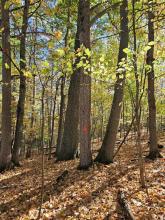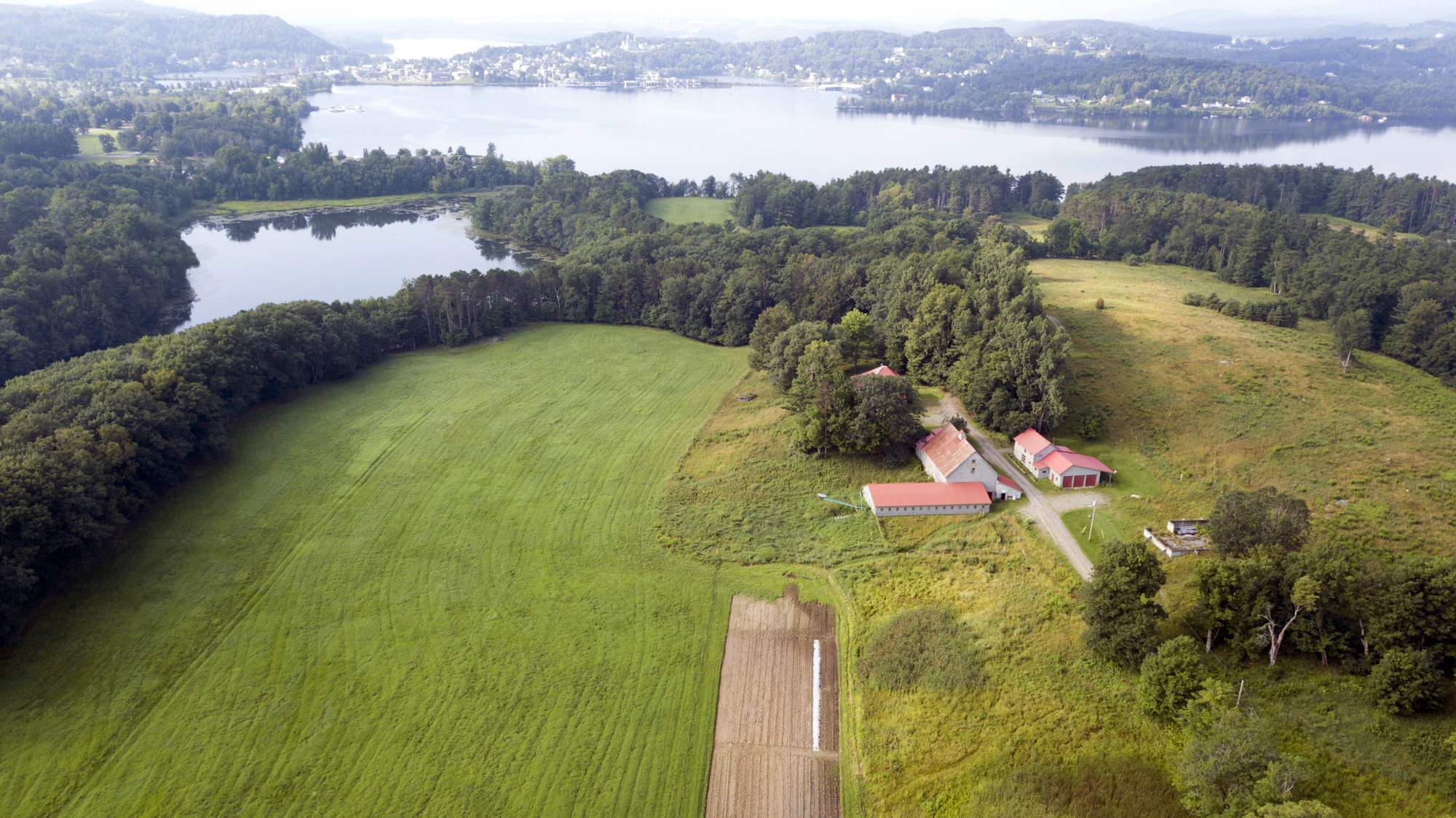Submission information
Bluffside Farm, SAP-Ne Demonstration Site (Newport, VT)

Vermont Land Trust treated a preservation patch of seven white ash trees, 5 females and 2 males, on the Bluffside Farm in Newport VT. The trees were first treated in 2022 and then again in 2025 with emamectin benzoate to protect them from the emerald ash borer. They will be treated every 3 years to preserve genetic diversity and protect seed trees for future ash regeneration. They are the northernmost patch in a network of ash preservation patches in Vermont. Forest stewardship practices at this site are supported in part by the Sustaining Ash Partners Network (SAP-Ne) , through a demonstration site network showcasing effective approaches for preserving future generations of ash in the face of emerald ash borer.
Site Location
Newport, Vermont
The preservation patch is on either side of the accessible trail on Bluffside Farm in a stand to the west of Scott Cove on Lake Memphremagog.
-72.212516
44.952856
From the south: Traveling north on Interstate 91, take Exit 27 toward Newport. Merge onto Route 191 North. After 2.2 miles turn right onto Route 5 North. Shortly after, stay straight onto Union Street (Route 5 will turn right). In a little less than a half-mile mile turn left onto Bluff Road. Follow Bluff road for under 1 mile. You’ll see a small parking lot on the left.
From the north: Traveling south on Interstate 91, take Exit 28 for Route 5 South/105 West toward Newport. After a mile turn right on Shattuck Hill Road. After 1.2 miles turn left on Darling Hill Road. In just under half a mile, turn right onto Prouty Drive. After about a mile, bear right on Prouty Drive. After 7/10 of a mile bear to the right onto Bluff Road. You’ll see a small parking lot on the left.
From the parking lot: Follow the accessible trail along the edge of the field. When you get to the area with forest on both sides of the trail some of the treated trees will be in the drainage on the left side of the trail.
Visitors can park in a small parking lot on Bluff Rd and then follow a universally accessible trail, by foot or bicycle, to the treatment area.
Vermont Land Trust
+1 802-989-9616
Stand Information
3-acre area where 7 ash trees were treated
Ash
emerald ash borer
emerald ash borer
Pre-treatment Conditions
Much of the stand was likely established on former agricultural land about 100 years ago. There has been no recent forest management activity within the stand.
Emerald Ash Borer
Silviculture Prescription
Emerald ash borer threatens the long-term existence of all species of ash native to North America. In July of 2019, emerald ash borer (EAB) was detected in Derby Line, less than 8 miles from Bluffside Farm. White ash represents 3% of the basal area in the northern hardwood stand where we identified 5 healthy female white ash and 2 male white ash trees ranging in size from 6” to 24” diameter at breast height (DBH). These 7 white ash trees were injected with emamectin benzoate in July 2022 and then again in June 2025 to preserve genetic diversity and protect seed trees for future ash regeneration. This is one site in a network of sites owned by non-profit and state and federal partners where ash preservation patches have been established to conserve ash genetics.
Conserve a reproducing population of white ash and the genetics of white ash.
The primary goal of the landowner is to maintain a healthy and productive agricultural and forest ecosystem that provides a diversity of benefits. VLT manages the property to meet the following objectives: - Protect forest health, water quality and soil health - Produce high quality timber products and maple sap - Protect native biodiversity - Protect historic and cultural resources - Enhance and protect wildlife habitat - Increase forest resilience in the face of climate change
Seven white ash trees (5 female and 2 male) were treated with a systemic trunk injection of emamectin benzoate 10.0% (Trade name: TREE-age R10 by Arborjet) at an application rate of 2 mL per inch DBH using the Arborjet QUIK-jet AIR Kit. Trees were sexed in 2021. The first treatment occurred in 2022 and the second treatment occurred in 2025. We plan to continue to treat these trees every three years.
- forest health
- species or ecosystem restoration
Arborjet QUIK-jet AIR
Lessons learned: Planning a couple years ahead is highly recommended as it's easiest to sex trees during heavy seed years, which are episodic. It is important to sex trees before treatment because you need to make sure you treat enough females. For genetic conservation goals, USFS researchers recommend 1:4, male:female.
Post-treatment
yes
yes
We check on the tree health between treatments and will adjust the treatment timing accordingly.
Miscellaneous
4 hours, not including travel time
$584, not including mileage or travel time
These trees will be treated every 3 years.
Statistics
Contact Information
Caitlin Cusack
Forester
Vermont Land Trust
Supplementary Content


